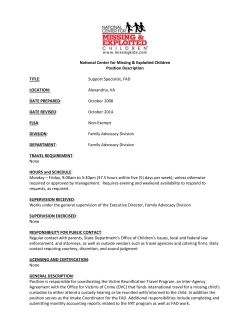
an infographic on FADs
ISSF research on Fish Aggregating Devices Over 40% of global tuna catch FADs are floating rafts designed to attract fish -often with hanging components is based on floating objects, including FADs Many FADs have tracking devices attached The controversy surrounding FAD use is about the number of small tuna and non-target species captured or entangled Marine species are drawn to any floating object Of highest concern are effects A purse seine vessel encircles the FAD and species aggregated near by on sharks and small bigeye tuna (region-dependent) FAD fishing can also impact sea turtles and other finfish such as wahoo, dolphinfish, rainbow runner and billfish ISSF is investigating ways to lessen the impact on non-target species ISSF Recommendations Do not cover FAD surfaces with mesh reduces turtle entanglement Use non-meshed materials such as ropes or canvas sheets for hanging components reduces shark entanglement Use natural or biodegradable materials such as bamboo, palm leaves and brush reduces ocean debris Avoid setting on small schools can reduce bycatch with little impact on total target catch Ongoing FAD Research Technical methods to reduce catch of small bigeye tuna and impacts to sharks and other finish by purse seine vessels, include: Echo-sounder buoys to remotely assess the amount of small bigeye tuna around FADs potential reduction of under-sized tuna caught Acoustic & visual means to assess the species composition and behavior of fish aggregations around FADs and in the net potential reduction of bycatch through avoidance or selective release; i.e. escape panels, backdown procedure Acoustic tagging and tracking of bigeye and non-target species around FADs potential avoidance of small bigeye and non-target species Comparison of shallow vs deep hanging components on bigeye catch potential avoidance of small bigeye Double FAD experiments to examine potential to separate bycatch from tuna on adjacent FADs potential avoidance of small tuna and non-target species For More Information, visit iss-foundation.org
© Copyright 2025











